The MDR-MV1 are Sony’s latest studio mixing and monitoring headphones. They could be considered the spiritual successors of the legendary MDR-7506, which have been around for over 32 years and are still on sale.
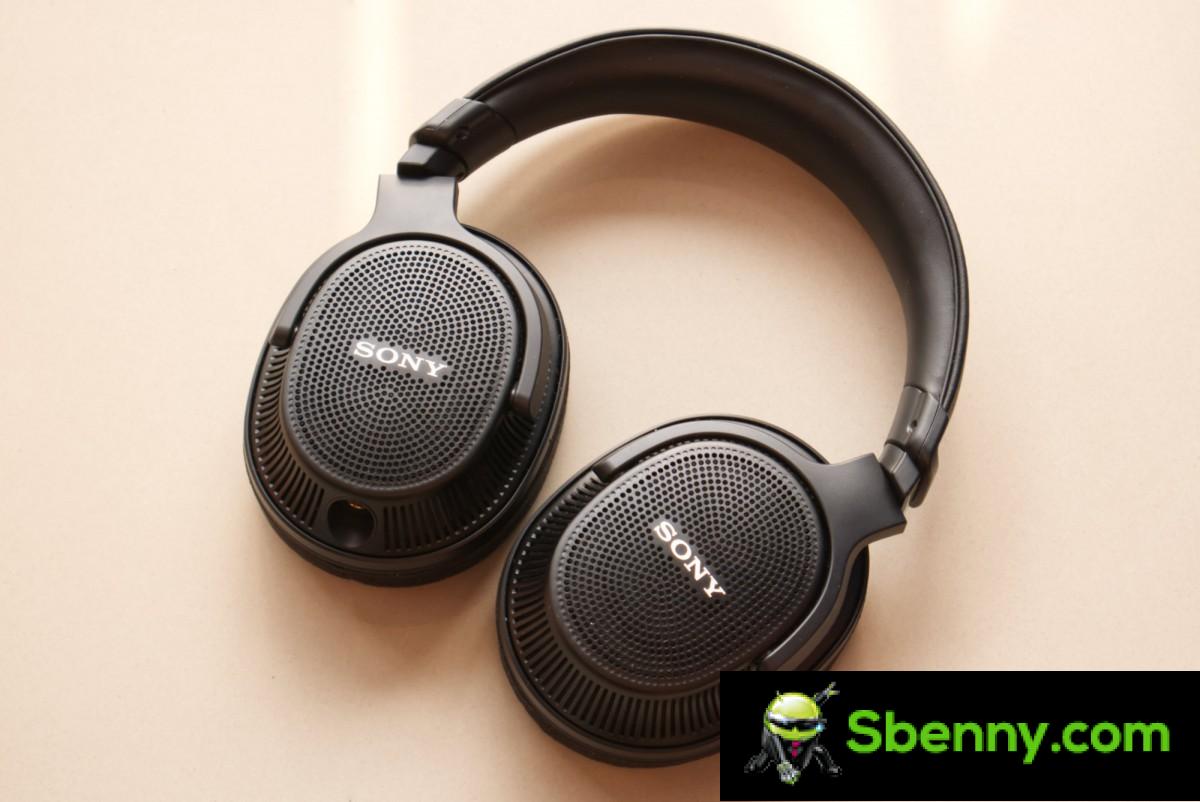
Unlike previous Sony headphones meant for studio use, the MV1 are open-back headphones. Sony intends to use them more specifically for spatial audio mastering, which is becoming more and more popular these days with the advent of Dolby Atmos (and less so because of Sony’s 360 Reality Audio).
In this review, I’ll check whether the MV1s are suitable for their intended purpose and how they perform for other activities, such as listening to music and playing games.
Project
The MV1 has a fairly standard and unassuming all-black design. The metal earcups are fully cross-linked, making the entire back porous. The plastic yokes connect to the headband which adjusts with a simple sliding mechanism. The mechanism is smooth and there are markings so you can also insert them on both sides and make notes for different users.
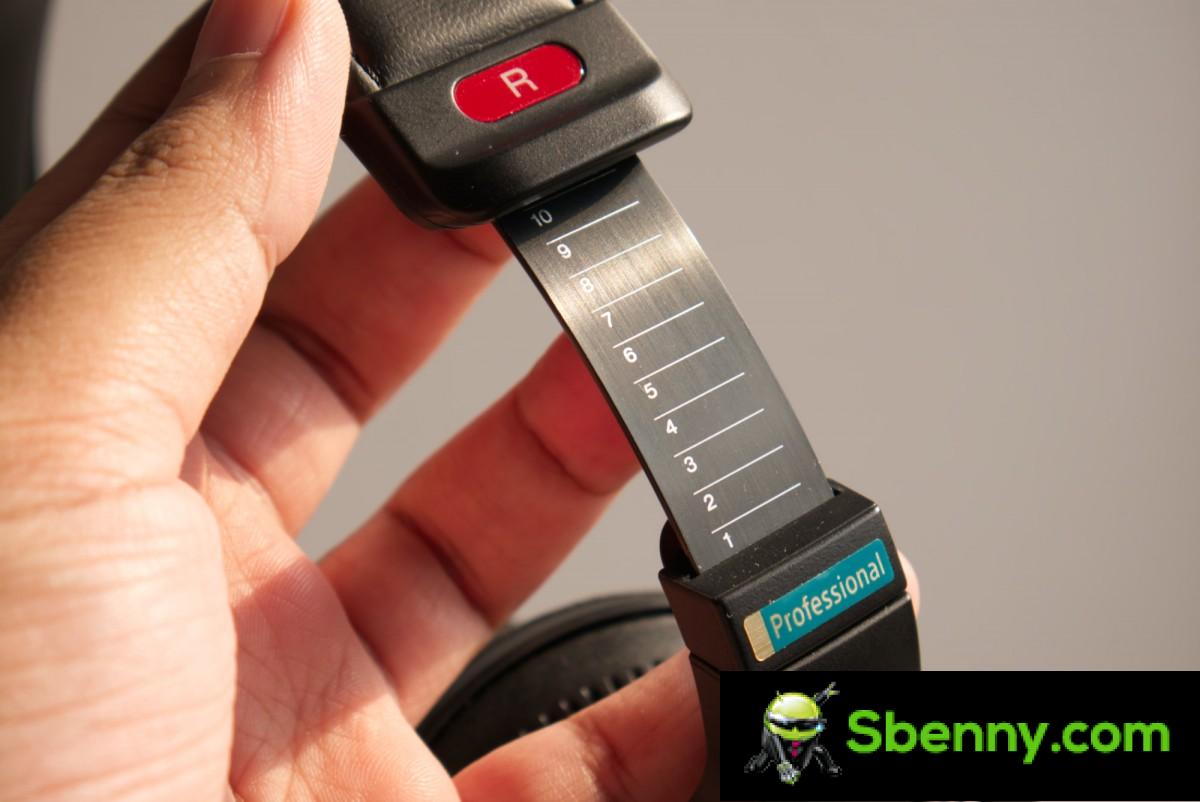
The band has a leather-like material at the top with stitching around the edges. The bottom has soft foam padding that is mostly concentrated around the center of the headband and doesn’t go all the way to the ends.
The ear cups feature huge foam cushions with a soft velvet-like texture. The pads are 2cm deep before the ears touch the fabric grill inside and then another 0.5cm before touching the hard plastic grill. The pads are removable but, as far as I know, Sony doesn’t sell replacements. Getting new pads when they inevitably flatten out and change the sound profile will be difficult and once again you may have to rely on aftermarket sellers.
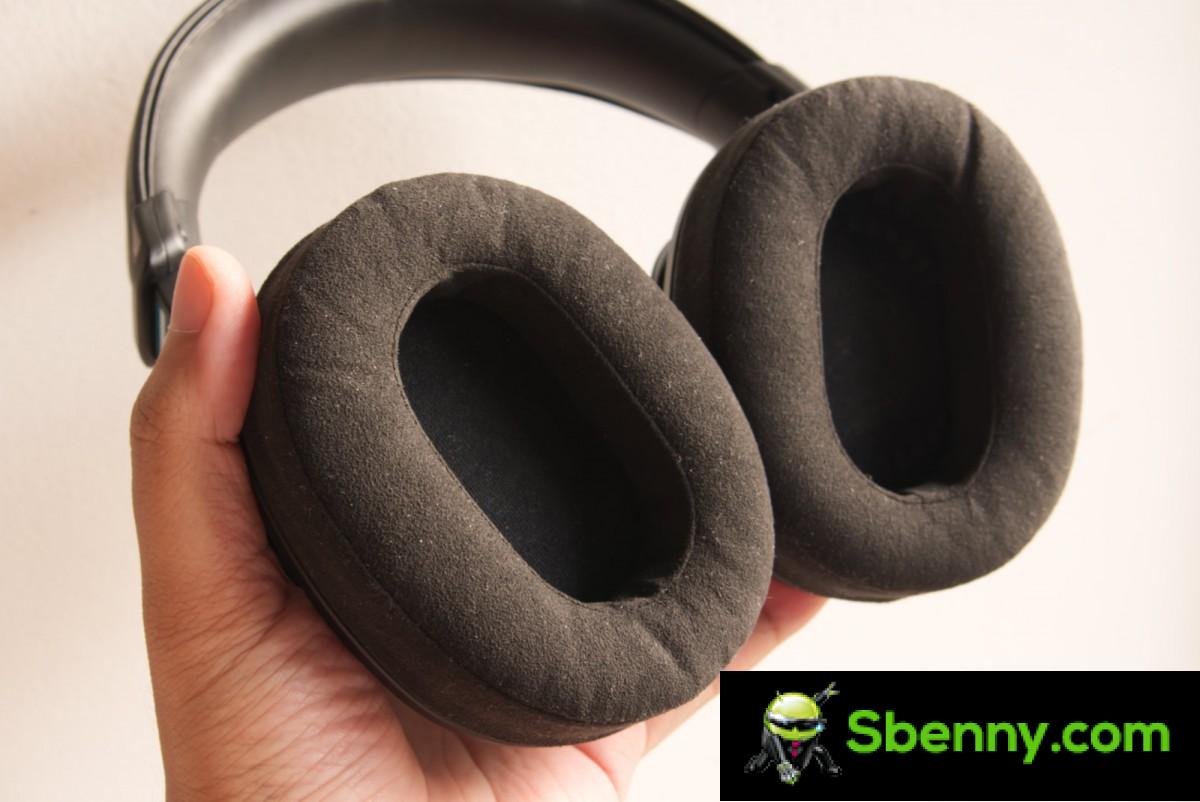
The headphones have a one-sided connection on the left ear cup. By default, the MV1 comes with a single 2.5m long cable with a 3.5mm connector on one end and a 6.3mm connector on the other end. The smaller one connects to the headphones and there is also a screw mechanism that secures it in place. You also get an adapter that converts the 6.3mm plug to 3.5mm.
The quality of the cable is great and the use of metal for the connector ends on both sides is fantastic. However, I would have preferred if there were two cables in the package, the longer 2.5m cable with the 6.3mm end and a shorter 1m cable with the 3.5mm end, something that they come with many other cheaper headphones. The included adapter is also unnecessarily bulky and heavy enough to drag your phone around if you happen to plug it into one.
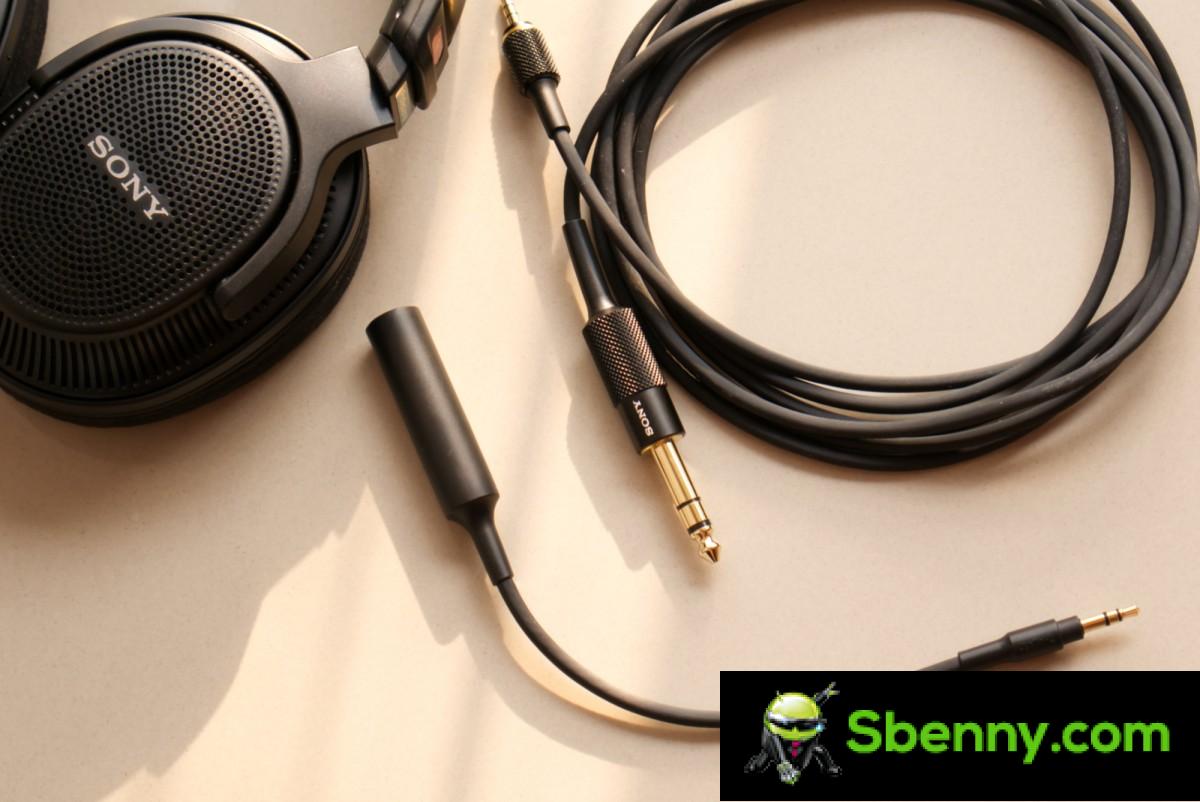
The overall build quality of the headphones is good. Sony headphones have a tendency to not feel particularly premium at first, but end up outliving their owners. I have no doubt that the MV1 will also age well unless you are particularly violent.
The headphones are also very comfortable. The pads are comfortable and have a great depth that most people should find accommodating. They are also not too heavy and have just the right amount of clamping force. I wore them for hours playing and felt no discomfort or tiredness.
Being meant for studio use, the MV1 doesn’t come with many accessories in the box. The box itself is simple and inside are the aforementioned cable and adapter along with the headphones.
Performance
The idea of open studio headphones for mixing and mastering instead of just monitoring is quite intriguing. If you ask studio engineers, they will tell you that headphones are only used in studios to monitor artists or as a secondary source to check for problems in the mix. There is almost no real mixing or mastering with headphones, let alone open ones, as that is solely the domain of studio monitors, i.e. speakers.
We’ll come back to this, but first let’s talk about the sound. The MV1s don’t sound like I expect studio mixing and mastering headphones to sound like. Sony claims the sound is “neutral,” “precise,” and “uncolored,” but it’s none of those things.
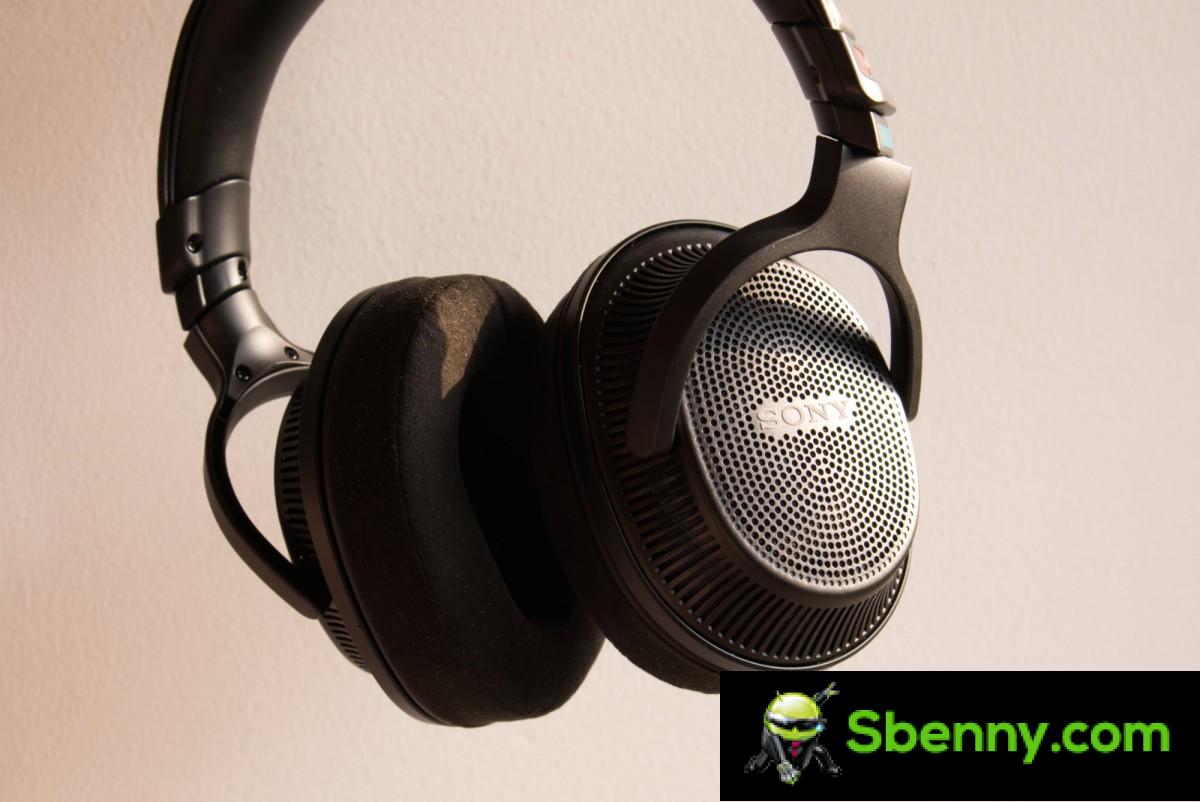
First of all, the sound is relatively low. The MV1 has fairly wide-band bass boost in the mid and upper bass frequencies. It’s not enough to say that the headphones have heavy bass, but there’s enough additional energy in these regions for the sound to be consistently warm and boomy. There isn’t as much energy in the low bass, so there isn’t a deeper thump accompanying the rumble, which feels a little unsatisfying if you’re simply listening to music and not monitoring. If you are monitoring you may be wondering why there is so much mid-bass and if you made any mistakes while mixing.
The midrange is also a bit all over the place. The lower mids are colored by the upper bass energy pouring through, giving deeper vocals additional depth and warmth not present in the mix.
Unfortunately, the upper mids disappoint the most. The MV1s are rather lacking in the upper-mid range, which makes the sound a bit dull, like a slightly blurry image. It covers all the vocals with a layer of mush and, together with the low and low mids, it simply sounds dark and cloudy.

Treble performance is decent in isolation. The upper treble can be a little bright at times, but overall the treble performance is confident and satisfying with good extension and reproduction. Unfortunately, suppressed upper mids can make the highs sound spikier than they are (a dip before a peak further highlights the peak), which puts more emphasis on the upper highs. This, combined with the bass, can actually give the sound a slight V-shaped slant.
I’m sure Sony has a reason for optimizing the sound this way, but I can’t figure out what it is. Calling them “mixing and mastering headphones” is just strange as it’s not something headphones are usually used for in a studio environment. The specific mention of spatial audio is also strange as you can’t master spatial content with headphones as the sound will spin in your head, rendering any kind of mastering useless. Their open-back nature also makes them unsuitable for monitoring in a sound booth. You could use them for monitoring after you’ve completed mixing and mastering, but fine-tuning the sound once again works against them.
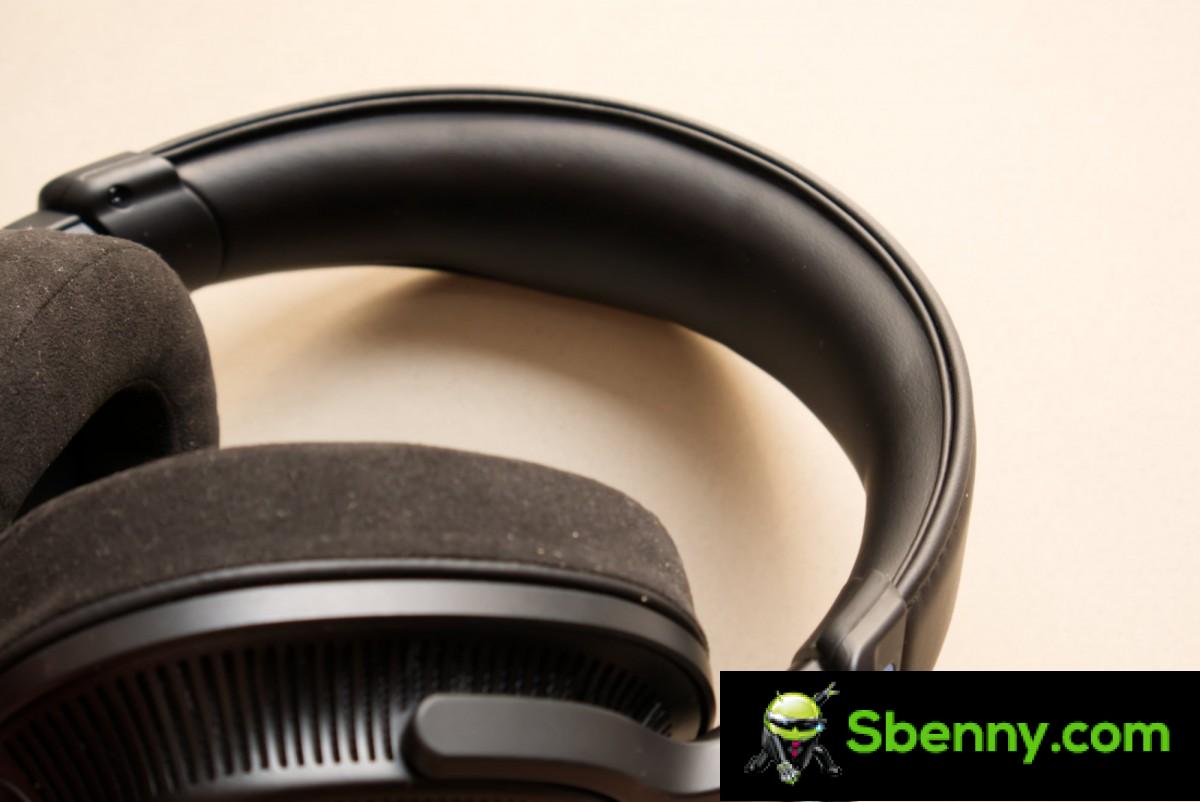
So they are not suitable for studio use, but how about just listening to music? In this case the MV1 doesn’t fare so badly. I didn’t particularly like the bass drop as it dropped lower in the frequency range and the lack of clarity in the upper midrange kept grinding my gears. However, for the most part, MV1s are fun when used purely for listening to music for the fun of it.
However, the best use I got out of the MV1 was for gaming. Thanks to the spacious soundstage and great image qualities, the MV1s are quite nice when it comes to gaming. As someone who games for several hours every day, the comfort, accurate audio positioning, and relatively balanced sound compared to “gaming” headphones made these excellent for gaming. The only thing missing is a microphone.
The MV1 are very easy to drive headphones. You can essentially feed them anything and still get ample volume. Even with a basic Shanling UA2, the MV1 would get very loud at around 50% volume. A desktop amplifier would be nice as it means you wouldn’t need to use the bulky adapter but it’s not necessary.
competition
There’s no shortage of competition in the headphone space. For studio use, Beyerdynamic headphones have long been the gold standard. Closed options like the DT 770 Pro are great for monitoring talent, while the open DT 990 Pro is great for post-mix monitoring for flaws. Their bright, almost hard tuning makes them ideal for this purpose.
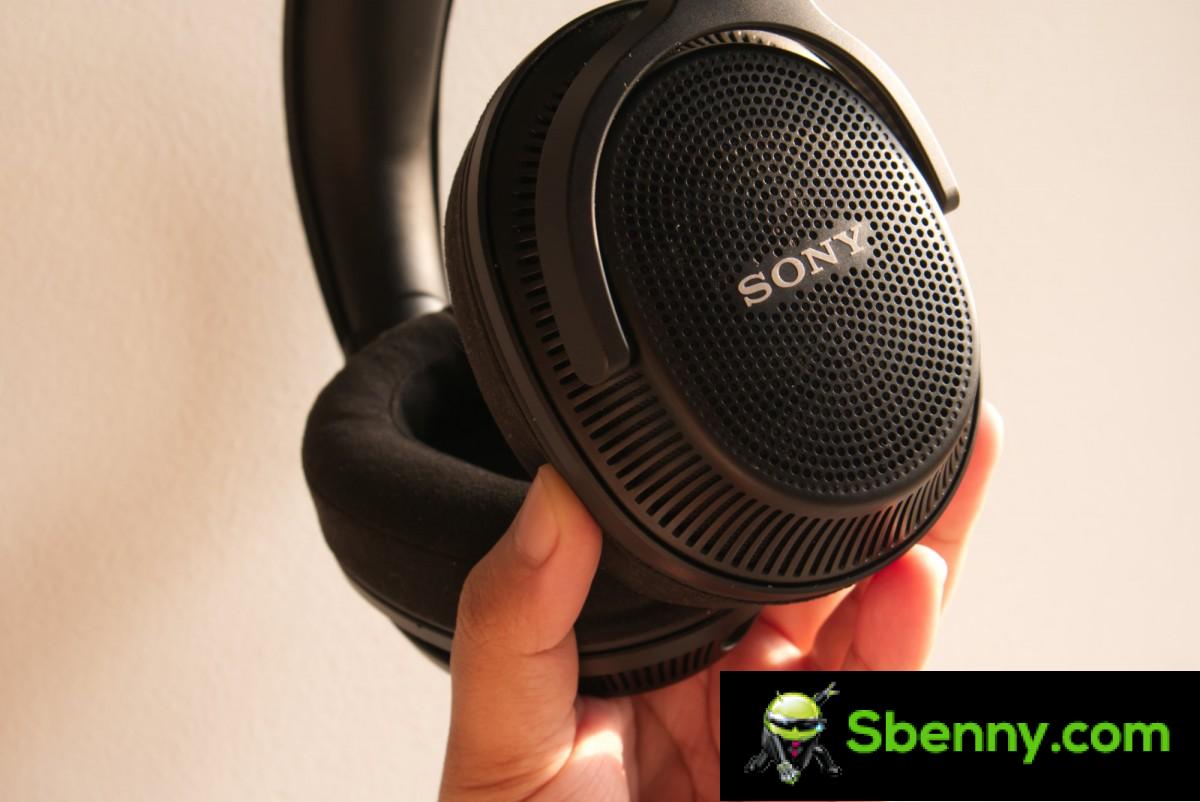
For listening to music, the HiFiMan Sundara, often considered one of the best pairs of headphones you can buy, sound better. If you’re on a budget, the HE400se is a terrific option. For gaming, the Sennheiser x Drop PC38X is a great option and if you don’t want a mic get the 560. And yes, they are all cheaper than the MV1.
Conclusion
At $400, the Sony MDR-MV1s are a pretty expensive pair of headphones. I think Sony missed the mark on the whole “headphone studio mixing and mastering” angle with weirdly colored V-shaped tuning. They’re great for listening to music and even better for gaming, but they’re hard to recommend for those use cases at the current price point where better, cheaper alternatives are available. But if you can somehow get them for $250 or less, they’re definitely worth considering.







Start a new Thread